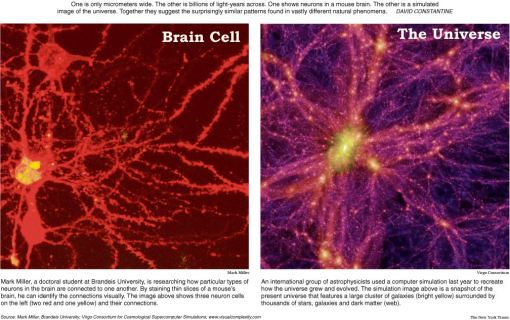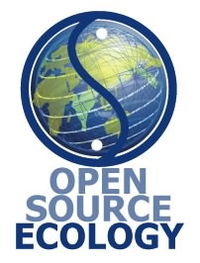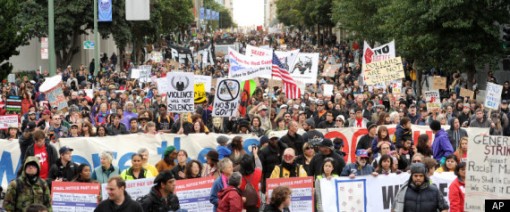from Al Jazeera English
by Michel Bauwens
Open-source software, shared innovation and crowd-sourced manufacturing threaten capitalism as we know it.
”]

Chiang Mai, Thailand – Does Facebook exploit its users? And where is the $100bn in the company’s estimated value coming from?
This is not a new debate. It resurfaces regularly in the blogosphere and academic circles, ever since Tiziana Terranova coined the term “Free Labour” to indicate a new form of capitalist exploitation of unpaid labour – firstly referring to the viewers of classic broadcast media, and now to the new generation of social media participants on sites such as Facebook. The argument can be summarised very succinctly by the catch phrase: “If it’s free, then you are the product being sold.”
This term was recently relaunched in an article by University of Essex academics Christopher Land and Steffen Böhm, entitled “They are exploiting us! Why we all work for Facebook for free“. In this mini-essay, they make a very strong claim that “we can certainly position the users of Facebook as labourers. If labour is understood as ‘value producing activity’, then updating your status, liking a website, or ‘friending’ someone, creates Facebook’s basic commodity.”
This line of argument is misleading, however, because it conflates two types of value creation that were already recognised as distinct by 18th century political economists. The distinction is between use value and exchange value. For thousands of years, under conditions of non-capitalist production, the majority of the working population directly produced “use value” – either for themselves as subsistence farmers, or as tributes to the managerial class of the day. It is only under capitalism that a majority of the working population produces “exchange value” by selling their labour to firms. The difference between what we are paid and what the market pays for the products we are making is the “surplus value”.
But Facebook users are not workers producing commodities for a wage, and Facebook is not selling these commodities on a market to create surplus value.
Indeed, Facebook users are not directly creating exchange value at all, but instead communicative use value. What Facebook does is to enable this pooling of sharing and collaboration around their platform – and by enabling, framing and “controlling” that activity, they create a pool of attention. It is this pool of attention which is sold to advertisers, for an estimated $3.2bn per year, which is barely $3.79 in ad revenue per user.
We can, of course, argue that Facebook does a lot more than just selling the attention. For instance, their knowledge of our social behaviour, down to the individual level, has undoubted strategic value – for political power players and commercial firms alike. But is this surplus value really worth $100bn? That remains a speculative bet. For the moment, it’s likely that the nearly one billion users of Facebook do not find the $3.79 in ad revenue per user very exploitative, especially since they do not pay to use Facebook, and are using the website voluntarily. That said, there is a price to pay for not using Facebook, in terms of relative social isolation from their peers who are users.
Engineering scarcity
What is important, however, is that Facebook is not an isolated phenomenon, but part of a much larger trend in our society: an exponential rise in the creation of use value by productive publics, or “produsers“, as Axel Bruns calls them. It is important to understand that this creates a huge problem for a capitalist system, but also for workers as we have traditionally conceived them. Markets are defined as ways to allocate scarce resources, and capitalism is in fact not just a scarcity “allocation” system but also a scarcity engineering system, which can only accumulate capital by constantly reproducing and expanding conditions of scarcity.
Where there is no tension between supply and demand, there can be no market and no capital accumulation. What peer producers are doing, for now mostly producing intangible entities such as knowledge, software and design, is to create an abundance of easily reproduced information and actionable knowledge.
This cannot be directly translated into market value, because it is not at all scarce – it’s over-abundant. And this activity, moreover, is done by knowledge workers, whose ranks are steadily expanding. This over-supply threatens to make knowledge workers’ jobs precarious. Hence, an increased exodus of productive capacities, in the form of direct use value production, outside the existing system of monetisation, which only operates at its margins. In the past, whenever such an exodus occurred – of slaves in the decaying Roman Empire, or of serfs in the waning Middle Ages – that is precisely the time when conditions were set for major societal and economic changes.
Indeed, without a core reliance on capital, commodities and labour, it is hard to imagine a continuation of the capitalist system.
The problem is this: internet collaboration has enabled the creation of use value in a way that totally bypasses the normal functioning of our economic system. Normally, increases in productivity are somehow rewarded, and these rewards enable consumers to derive an income and buy products.
But this is no longer happening. Facebook and Google users create commercial value for their platforms, but only very indirectly. And they are not at all rewarded for their own value creation. Since what they are creating is not what is commodified on the market for scarce goods, these value creators do not receive income. Social media platforms are exposing an important fault line in our economic system.
We have to link this emerging social economy, based on sharing creative expression, with the more authentic field of commons-oriented peer production, as expressed in the open-source and “fair use” open-content economy, which one estimate said made up one-sixth of US GDP. There is also no doubt that one of the key ingredients of China’s success so far has been the combination of the open-source – such as the country’s domestic “Shanzai” economy – together with the patent-free policies that are imposed on foreign investors. This has guaranteed an open, innovative commons for much of Chinese industry.
Even as the open-source economy becomes the default way to create software, and even as it creates companies that reach a revenue of more than $1bn, such as Red Hat, the overall effect is still deflationary. It has been estimated that open-source annually destroys $60bn in revenues for the proprietary sector.
Thus, the open-source economy destroys more proprietary software value than it replaces. Even as it creates an explosion of use value, its monetary value decreases.
Open-source manufacturing
The same effects occur when the shared innovation commons approach is used in physical production, where it combines an open-source approach with distributed machinery and capital allocation (using techniques such as crowd-funding and social lending platforms, like Kickstarter).
For example, the Wikispeed SGT01, a car that received a five-star security rating and can attain a fuel efficiency of 100 miles per gallon (roughly 42.5 kilometres per litre), was developed by a team of volunteers in just three months. The car is being sold for only $29,000, about a quarter of what a traditional industrial automobile firm would charge, and for which it would have needed at least five years of development and billions of dollars.
Local Motors, a rapidly growing crowd-sourced car company, claims to develop automobiles five times faster than Detroit, with 100 times less capital, but WikiSpeed has achieved even faster design and production times. The WikiSpeed car is designed for modularity, using sophisticated software development techniques (such as agile, scrum, and extreme programming), an open design, and local production by garages, using distributed manufacturing techniques.
And Arduino, an open-source electronics prototyping platform, works similarly to WikiSpeed and is driving prices down in its sector. If Marcin Jakubowsky’s Open Source Ecology project is successful, this will happen for at least 40 different types of machinery. In every field where an open-source manufacturing alternative develops – and I predict that they will be developed in every single field – there will be similar pricing and income pressures on mainstream economic models.
‘Collaborative consumption’
Another expression of the sharing economy is collaborative consumption. As Rachel Botsman and Lisa Gansky have demonstrated in their recent books – What’s Mine is Yours and The Mesh, respectively – there is a rapidly growing sharing economy developing through product-service systems, sharing marketplaces and collaborative lifestyles.
For example, it’s estimated that there are about 460 million homes in the developed world, and that each home has, on average, $3,000 worth of unused items available. There is clearly economic benefit to be had by using these idle resources. Much of it will not be rented, however, but swapped and bartered for free. Even the paid sharing economy will have a depressive effect on the buying of new products.
Such developments are good for the planet and good for humanity, but the larger question is: are they good for capitalism?
What will happen with capitalism given social media-based exchanges, commons-based production of software and hardware, and collaborative consumption, on an increasingly massive scale?
What happens if more and more of our time goes into producing use value – a fraction of which creates monetary value – but there is not a substantial return of income to the use value producers?
The financial crisis beginning in 2008, far from diminishing the enthusiasm for sharing and peer production, is in fact accelerating the adoption of such practices. This is not just a problem for the increasingly precarious working class, but also for capitalism itself, which is seeing its opportunities for accumulation and expansion dry up.
Not only is the world faced with a global resource crisis, it is also facing a crisis of intensive development, because value creators are increasingly income-less. The knowledge economy turns out to be a pipe dream, because what is abundant cannot sustain market dynamics.
Thus we have an exponential rise in the creation of use value, but only a linear increase in the creation of monetary value. If workers have less and less income, who can buy the commodities that are offered for sale by companies? This, in a nutshell, is the crisis of value that we are facing as humanity. It is a challenge just as big as climate change or increases in social inequality.
The meltdown of 2008 was a prefiguration of this crisis. Since the advent of neoliberalism, workers’ wages have been stagnating and purchasing power was maintained only by an over-extension of credit throughout society. This was the first phase of the knowledge economy, in which only capital had access to networks, which it used to create globally coordinated multinationals.
As the knowledge society grew in size, more and more of businesses’ value consisted of intangible, not physical, assets. The neoliberal stock market and its speculative excesses can be seen as a way to evaluate the amount of intangible value that is added to the stock’s value by human co-operation. This bubble had to burst.
The second phase of the knowledge society, in which networks are diffused throughout society and allow productive publics to be directly engaged in peer production, creates an additional layer of problems. Add to the wage stagnation and the exodus out of wage labour that peer-based use value creation causes, and we can see that the problem is not solvable within the present paradigm. Is there a solution?
There is – but that is for the next installment. The solution involves an adaptation of capitalism to peer production, but also opens up the avenues for a transcendence of capitalism.
Michel Bauwens is a theorist, writer and a founder of the P2P (Peer-to-Peer) Foundation.







